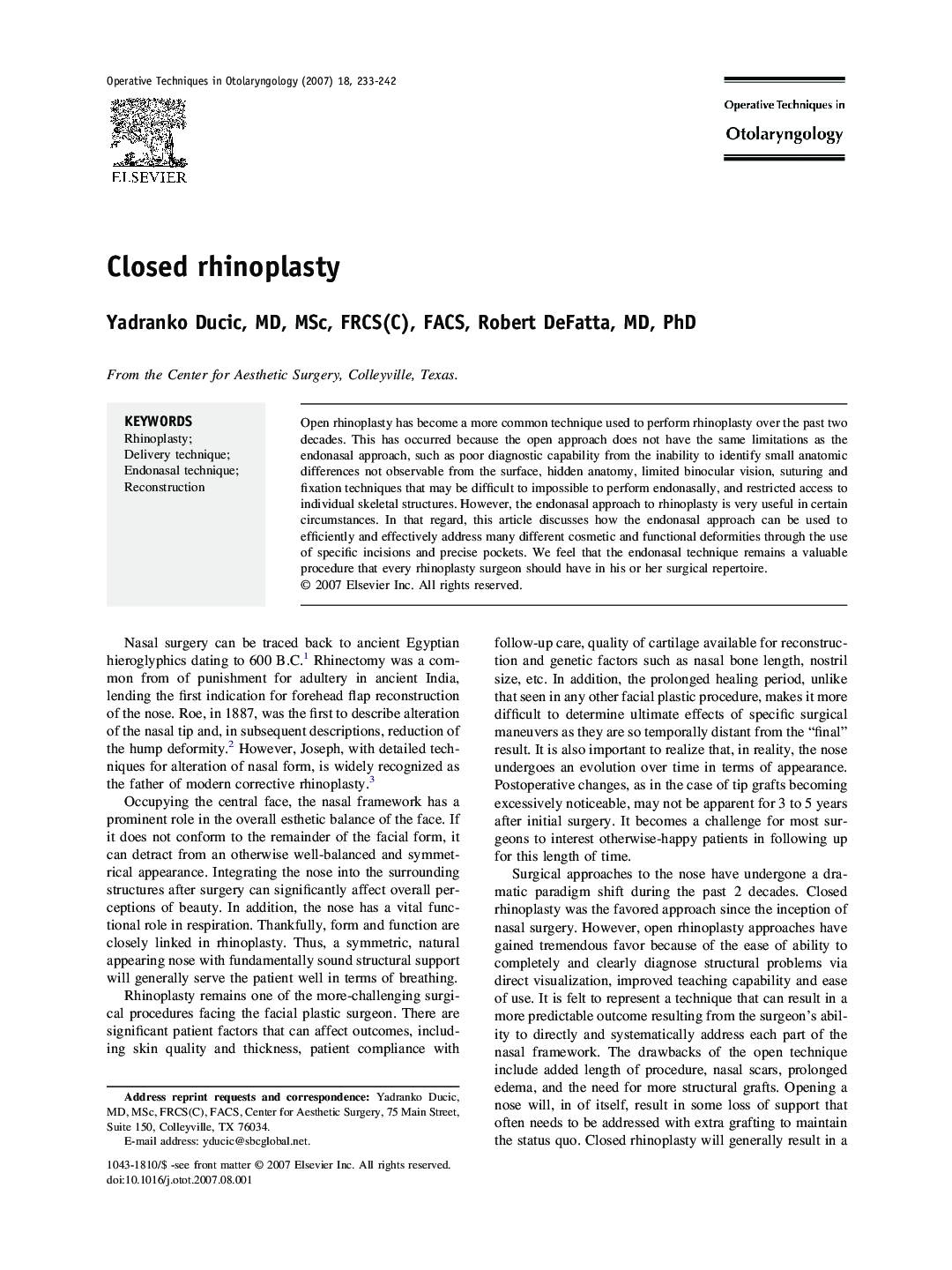| Article ID | Journal | Published Year | Pages | File Type |
|---|---|---|---|---|
| 4123126 | Operative Techniques in Otolaryngology-Head and Neck Surgery | 2007 | 10 Pages |
Open rhinoplasty has become a more common technique used to perform rhinoplasty over the past two decades. This has occurred because the open approach does not have the same limitations as the endonasal approach, such as poor diagnostic capability from the inability to identify small anatomic differences not observable from the surface, hidden anatomy, limited binocular vision, suturing and fixation techniques that may be difficult to impossible to perform endonasally, and restricted access to individual skeletal structures. However, the endonasal approach to rhinoplasty is very useful in certain circumstances. In that regard, this article discusses how the endonasal approach can be used to efficiently and effectively address many different cosmetic and functional deformities through the use of specific incisions and precise pockets. We feel that the endonasal technique remains a valuable procedure that every rhinoplasty surgeon should have in his or her surgical repertoire.
